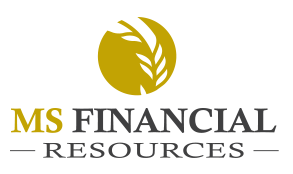I watched an excellent Bloomberg panel discussion the other day on how the Coronavirus could re-shape the world, and more specifically how COVID-19 has exposed vulnerabilities in our global supply chain. Before I get into that, let’s discuss the stock market and the overall economy. NOTE: These are 2 different things that, as we are seeing currently, aren’t always moving in the same direction.
The Overall Economy: The Chief Economist of the Organization for Economic Co-operation and Development (or the OECD) reported earlier this week that he predicts a very slow and gradual recovery in the global economy. In fact, I have even heard predictions that Global GDP will not get back to where it was until 2022. In the mean-time, CEO’s and national leaders are forced to reconcile how to re-open businesses to support the economy and GDP while keeping employees and the public-at-large as safe as possible. There are no clear or easy answers and each state has taken drastically different approaches. That said, the recovery might vary state-by-state as well.
The Stock Market: The global economy is not in good shape and could take a long time to recover, especially with added trade-war risk. The stock market, however, is trading closer to historic highs. April was the best month we’ve seen in gains since 1987. Where is the disconnect? Is the stock market “wrong”? Intervention by the Federal Reserve, which was arguably necessary, is largely what has boosted the stock market but how long will it last? This disconnect, between markets and the overall economy, combined with historic bear markets behavior presents a good case for another market correction. I wouldn’t necessarily bet on the Dow plunging all the way back down to 18,000 (March lows) but I also wouldn’t be surprised if we see another correction, especially after 2nd quarter earnings are reported and/or if there’s a resurgence in COVID-19 cases as things re-open. There are still more questions than answers though.
The Global Supply Chain: Before we discuss how this virus brought the current global supply chain into question, let’s define what the global supply chain really is. Put simply, it is the distribution of raw goods (made or grown around the world) moving from suppliers, to factories, to end users: the consumer. The creation of a GLOBAL supply chain has created a middle-class and lifted people out of poverty in China, Ethiopia, and other countries around the world. In response to the virus, however, borders are back (largely to protect our health). There is discussion about “re-shoring” or bringing the production back to the US and “deglobalization” or diminishing this interdependence that we’ve created around the world. One could argue valid points for or against this movement I suppose, but it does make the future of supply chain management look very different than what it was pre-COVID 19.
Another thing that is being discussed is “just-in-time” vs “just-in-case” inventory strategies in the supply chains. A “just-in-time” inventory is lean, efficient, and cost-effective. That sounds good, however, when there is a surge in demand for masks, ventilators, and medical equipment, this approach can be dangerous and even cost lives like we have seen. A “just-in-case” inventory reduces risk of back-orders and provides a larger inventory on-hand. It’s downside, however, is that it ties up capital in inventory. It is less cost-effective and frankly, not all countries can afford to stock-pile goods (especially in places like Africa).
Much like reopening the economy presents a delicate balance, so does managing these two styles of supply chains. I will not be surprised, if at least in the healthcare sector, we move toward “just-in-case” inventory. Having a brother on the front lines in the Emergency Room, it is very much my hope that we do!
Regarding our local supply chain, I went to 2 grocery stores yesterday getting food for myself and for my parents. FYI – If you wish to buy chicken right now, good luck! Both stores were out and Costco had a sign limiting 3 total meat purchases per Costco member. I realize this can be frustrating but considering the safety concerns for meat-packing plant workers, I don’t need meat that badly. But also, I’m really glad I split a side of beef last Fall with my best friend! I expect to see a spike in meat prices in coming months.
The great American philosopher, Yogi Berra, once said, “The future ain’t what it used to be.” I cannot think of anything that better sums up the fundamental changes and structural shifts to globalization and the future of supply chain management. Will we have to re-write the playbook post-COVID 19?
This post merely scratches the surface on these topics. I’d love to “geek-out” and discuss them more! Would you like to talk about them or do you have other questions? If so, I invite you to schedule a phone call or Zoom meeting with me by using the scheduler here on our website.

